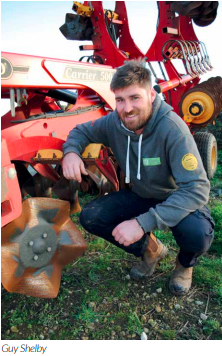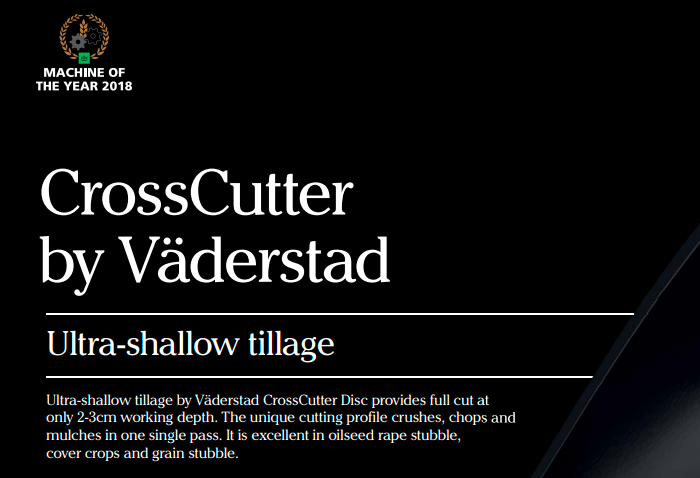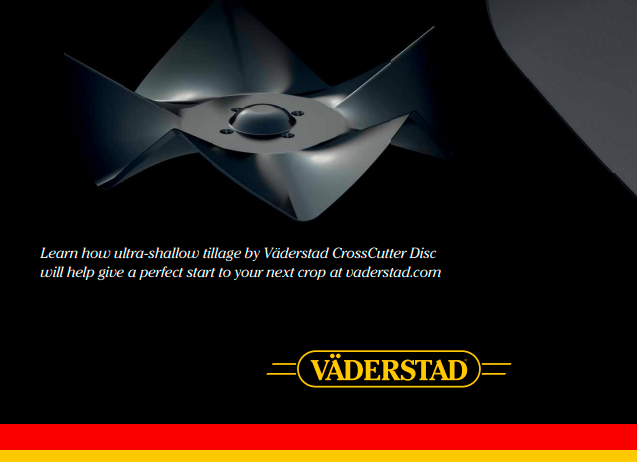UNIQUE CULTIVATOR DISC REVOLUTIONISING SEEDBED

Employing only a shallow disc cultivator that mixes heavy amounts of trash and crop residue efficiently, has saved cost and timing as well as improved soil condition on an East Riding arable farm without compromising yield.
Guy Shelby farms in partnership with his father Chris and brother David at Benningholme Grange, Skirlaugh, East Yorkshire where all farming operations are scrutinised and developed for maximum efficiency. The farm is constantly evolving and the family is always looking at ways to reduce input costs without compromising cereal establishment or gross margins. Most recently it has been the cultivations that have come on the radar.
Gone is the conventional approach of using heavy cultivations, and in is the unique Carrier and CrossCutter disc followed by either a 4m Simba drill or 4m Mzuri drill. Guy Shelby has always maintained that there must be a simpler and cheaper way to establish a cereal crop without compromising gross margins. “In my opinion conventional strategies are unsustainable and changes will have to be implemented as production costs continue to rise. We have been fairly radical in our approach and only time will tell, but at the moment it is working and we haven’t seen establishment compromised or a drop off in our 10t/ha yield average.”
Historically he says seedbed preparation on the farm could have involved up to seven passes with various cultivation tools, including a plough, flatlift, two passes with a Cultipress, power harrow, drill and roll all in the same field. “Our cost of establishment for second wheat was £120/acre, and even higher where a flatlift was used for the first wheat,” he says. “But, this year having reduced cultivations to the Carrier and CrossCutter followed by drill for second wheat, cost is now just £28/acre. This is a huge saving over our 1000 acres of cereals.”
The business reached a crossroads when a farming partnership with a neighbour came to an end in 2012 so there was a requirement to reinvest in kit, which also gave the family a chance to consider alternative cultivation strategies. “We looked at a Simba Express but it was too heavy for our land,” says Mr Shelby. “It’s also well known that Vaderstad kit is built to last but the discs on our existing Carrier 550 had achieved nearly four seasons to the end of 2017, so needed replacing.”

It was while replacement discs were being considered for the Carrier that Mr Shelby watched a video of the CrossCutter disc working, which showed how its unique design for improve mixing of trash and soil at shallow depths on stubbles, cover crops and ploughed land could be achieved. “Our old discs were worn and we were having to work much deeper to achieve a workable tilth,” says Mr Shelby. “This was not good news for blackgrass control.” At Cereals 2017 Mr Shelby then saw the CrossCutter disc and bought a set in time for spring 2018.
This summer was a good test for the Carrier. Despite very hard and dry soils the CrossCutter disc did a great job. The only problem is if it is working on really stony ground the discs can get blocked, he says, but is simple to rectify by reversing a few inches to release the stone. “Our Carrier is a better tool now than when we first bought it,” says Mr Shelby. “We only plough now for vining peas, although the CrossCutter can be used on any soil surface. Living near the coast it is rare to get harvest started before 11am, he says, and with no labour on hand to cultivate in time for drilling, covering as much land as possible quickly after harvest is essential.
“It’s about stubble management,” he says. “Sometimes we don’t need the CrossCutter and we can go straight in with the Mzuri drill. Often it is possible to use only our stubble rake prior to drilling because our soils have improved so much in recent years through better management. “We look to achieve shallow cultivations and the CrossCutter straight after harvest is our cultivator of choice now,” he says. “It saves a lot of time and it keeps the blackgrass seeds buried. Those that do germinate in the top two inches of top soil are burnt off with glyphosate.


